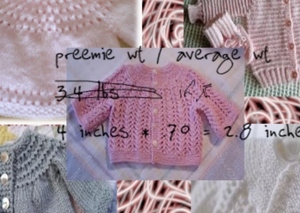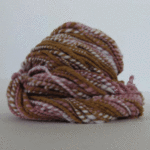If you are the parent of a premature infant, or “preemie,” than you understand the difficulty in finding clothes that fit your little bundle of joy. Even hand-made knitted sweaters and booties are generally not designed with the “preemie” in mind. You can, however, customize standard baby patterns to fit using some basic math and following these steps.
1. Note the default size of the item and the “gauge” shown at the beginning of the pattern. The “gauge” can be found at the very beginning of the instructions and will be just a single paragraph reading something like
GAUGE: 24.5 sts and 32.5 rows = 4 inches (or cms) over garter* stitch using size 5 needles.
*or whatever the pattern stitch used as a measurement.
2. Next, compare the measurement or weight of your preemie with the measurement or weight shown on the pattern as the default size. Divide your baby’s measurement by the stated measurement shown in the pattern. For example; if the sweater you wish to knit is designed for size 6-months (average chest size 20-21 inches) and your baby has a chest measurement of 16 inches, divide 16 by 21. This will give you a result of 0.76 or 76%, meaning your baby needs a sweater 24% smaller than the one you would make following the given instructions.
3. Now take the stated gauge that you found at the beginning of the pattern and multiply it by the result of your last calculation. In our example, 4 inches multiplied by .76 would equal 3.04 inches (round to 3 inches).
4. Now simply experiment with smaller knitting needles or thinner yarn (or a combination of both) until your can use the same number of stitches and rows to equal your new, smaller gauge. For example, if our gauge of 24.5 sts and 32.5 rows equaled 4 inches using sport weight yarn and size 5 needles, try using fingering weight yarn and size 3 needles to get the stitches and rows (24.5 and 32.5) to equal 3 inches instead of 4.
It’s good to know that most standard knitting patterns are designed to use worsted weight yarn, which is rather heavy, so you’ll probably have several thinner weights that you can try to substitute. Yarn weights range from fingering weight to roving weight and a standard yarn weight guide can be found at www.craftyarncouncil.com/weight.html.
These steps should enable you to adjust any pattern with a couple of easy-to-use math equations. You can find some wonderful baby layette items and other knit projects at www.whattoknitwhen.com or www.freepatterns.com.






